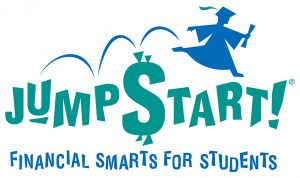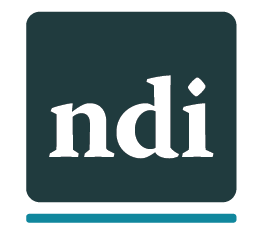By Laura Levine, President and CEO, Jump$tart Coalition
In February, the Jump$tart Coalition launched Check Your School, a public engagement campaign designed to harness the power of parents and others in starting a national conversation about the need for effective financial education in our nation’s classrooms. #CheckYourSchool supports the goals of Jump$tart’s Project Groundswell—which include a 25 percent increase in elementary, middle and high school financial education.
While many states already have some type of financial education requirement for high school students, the Check Your School campaign starts with—and even focuses on—students who are much younger. And some have asked us… why?
The Jump$tart Coalition and many of our partners believe that the right time to introduce children to learning about money is pre-school age or, as Janet Bodnar, author, family finance expert and editor-at-large of Kiplinger’s Personal Finance says, “By the time they’re old enough to know not to put it in their mouths.” Many kids have money of their own—birthday money, allowances and the like—by elementary school. And even those who don’t may still be influencing spending decisions. Why else would grocery stores put sugared cereals on shelves that are eye level to kids?
Personal finance expert and bestselling author Beth Kobliner references a University of Cambridge study, saying, “By age three, your kids can grasp basic money concepts. By age seven, many of their money habits are already set.” Since financial literacy extends beyond simple knowledge to knowing how to make smart financial decisions and establishing good money management practices, it seems that it may be never too soon to start.
Recognizing this, Jump$tart added kindergarten benchmarks (to the 4th, 8th, and 12th grade benchmarks) in our most recent edition of the National Standards in K-12 Personal Finance Education. These national standards guide educators, curriculum writers and resource developers in ensuring that the financial education offered in schools is comprehensive, consistent and age-appropriate. Some kindergarten benchmarks are as simple as counting money and identifying denominations—but this early introduction lays a good foundation for more advanced learning later on.
Jump$tart also uses the national standards as the basis for selecting resources for our online financial education clearinghouse (jumpstartclearinghouse.org). Today, we list more than 700 resources from a wide variety of providers. Parents, educators, and others can narrow their search by topic, grade level, resource format and other filters—including materials formatted for people with special needs—for use in the classroom or at home.
Financial education should start at home. Parents and family members can tailor their guidance to their own circumstances and culture. And let’s face it, who understands a child’s unique abilities and needs like his or her own mom and dad? But, not all parents or guardians are able—or feel confident enough—to teach their own kids everything they might need to know about managing money at home. And with that in mind, Jump$tart launched the Project Groundswell initiative and Check Your School campaign.
People often say they want their kids to get a good financial education, but don’t know how to provide it. CheckYourSchool.org helps parents use their “super power”—their voice—to start the conversation at their child’s school and ask for financial education. As parents, we may not always feel that schools are listening, but educators and administrators continue to tell us that parents and guardians are the most effective agents of change. Once the conversation is started, Jump$tart and our many partners stand ready with standards, resources, teacher training and other support to help make it happen.
While we at the Jump$tart Coalition think kindergarten is not too early, that doesn’t mean we think high school is too late. By the time they’re teenagers, students have a better ability to understand more complicated financial concepts. Also, their interest in part-time jobs, cars, student loans and similar life events make the financial education topics particularly timely and relevant. While high school students are already making many of their own financial decisions, effective financial education at this point in their lives will still help them avoid costly mistakes and give them a “jumpstart” on their lives as adults.
Information is power. With effective financial education, we can give the next generation of American consumers the information and ability—the power—to make smart financial decisions throughout their lifetimes. But we need to start now.
Laura Levine has devoted her career to helping people of all ages better understand financial services through marketing and outreach, communications and, most recently, through education. In 2004, she became executive director of the Jump$tart Coalition for Personal Financial Literacy, a Washington D.C.-based coalition committed to “financial smarts for students,” and was named President and CEO in 2011.
Laura began her career in credit unions and was a credentialed, Capitol Hill correspondent before moving into the securities industry. Laura served as Director of Editorial Services for the National Association of Securities Dealers (now FINRA) and, later, as Director of Education and Information for the NASD Office of Individual Investor Services. From 1999-2004, Laura was Director of the NASDAQ Educational Foundation.
Since taking over at Jump$tart, Laura has continued raise awareness about the importance of financial literacy and the need for effective financial education, while growing the coalition at both the state and national levels. She speaks and writes regularly on financial literacy for youth, especially the important role of parents and caregivers, and is featured as presenter and host of Jump$tart’s Facebook Live Broadcasts.
In 2008, Laura was appointed to the President’s Advisory Council on Financial Literacy by President George W. Bush and chaired the Council’s Youth Committee. She is currently a member of the Experian Consumer Council and the NFCC Connect Advisory Committee, and recently served on the Parent Cabinet for former DCPS Chancellor Kaya Henderson, the Curriculum and Assessment Task Forces for Child and Youth Finance International, and the Financial Literacy Advisory Group for the American Library Association.
A native of Los Angeles, Laura holds a degree in Broadcast Journalism from the University of Southern California and is a graduate of the Western CUNA Management School. She does not consider herself a financial expert, but rather, a staunch advocate for financial education and information and (she hopes) she is raising a financially literate son.
